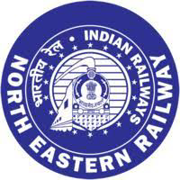About | North Eastern Railway (NER) , UTTAR PRADESH Check here latest notification
Exploring the North Eastern Railway: A Journey Through India's Eastern Frontier
India's vast railway network is a testament to its rich history, cultural diversity, and unparalleled connectivity. Among its many facets, the North Eastern Railway (NER) stands out as a gateway to the scenic landscapes and vibrant cultures of India's northeastern region. Spanning across the states of Uttar Pradesh, Bihar, West Bengal, and Sikkim, the NER plays a crucial role in connecting the heartland of India with its eastern frontier.
A Historic Journey
Established in 1952, the North Eastern Railway has evolved significantly over the decades. It encompasses a network of rail routes that traverse through some of the most picturesque terrains in the country. From the bustling cities like Gorakhpur and Varanasi to the serene hills of Darjeeling and the tea gardens of Assam, each journey on the NER promises a unique experience.
Connectivity and Routes
The NER is divided into several divisions, each contributing to its extensive reach and operational efficiency. Major routes include:
- Gorakhpur Division: Known for its strategic importance and vibrant cultural heritage, this division connects major cities in Uttar Pradesh and Bihar.
- Lucknow Division: Serving as a pivotal junction, this division connects the capital city of Uttar Pradesh with various destinations in the northern and eastern parts of India.
- Izzatnagar Division: Located in the northern part of Uttar Pradesh, this division plays a crucial role in connecting the region with the rest of the country.
- Varanasi Division: Situated on the banks of the holy river Ganges, Varanasi division is not only a cultural hub but also a key junction connecting eastern India with the northern plains.
- Alipurduar Division: Nestled in the foothills of the Eastern Himalayas, this division provides access to the scenic beauty of North Bengal and the northeastern states.
Cultural Tapestry
Traveling through the North Eastern Railway offers a glimpse into the rich tapestry of cultures that define this region. From the colorful festivals of Bihar to the traditional cuisines of West Bengal and the indigenous tribes of Sikkim and Assam, each stop along the NER route presents an opportunity to explore and appreciate the diversity of India.
Scenic Delights
One of the highlights of traveling on the NER is the breathtaking scenery that unfolds outside your window. Whether it's the majestic peaks of the Himalayas, the lush green tea estates of Assam, or the tranquil rivers and waterfalls dotting the landscape, every stretch of the journey is a visual treat.
Modernization and Future Prospects
In recent years, the North Eastern Railway has undergone significant modernization efforts to enhance passenger comfort and safety. Introduction of high-speed trains, modernization of stations, and improved connectivity have made travel on the NER more convenient than ever before.
Looking ahead, the NER continues to play a pivotal role in India's economic growth and regional development. With ongoing infrastructure projects and initiatives aimed at further expanding its network, the railway remains a vital lifeline for millions of people living in and traveling to the northeastern states.
Conclusion
The North Eastern Railway is not just a mode of transportation; it is a journey through time, culture, and landscapes. Whether you're a traveler seeking adventure or a commuter going about your daily routine, the NER offers an experience that is as diverse as the region it serves. From ancient cities to remote hill stations, from bustling markets to serene riversides, the North Eastern Railway invites you to embark on a memorable voyage through India's eastern frontier.
So, next time you plan your travels in India, consider exploring the North Eastern Railway for a truly enriching and unforgettable experience.

